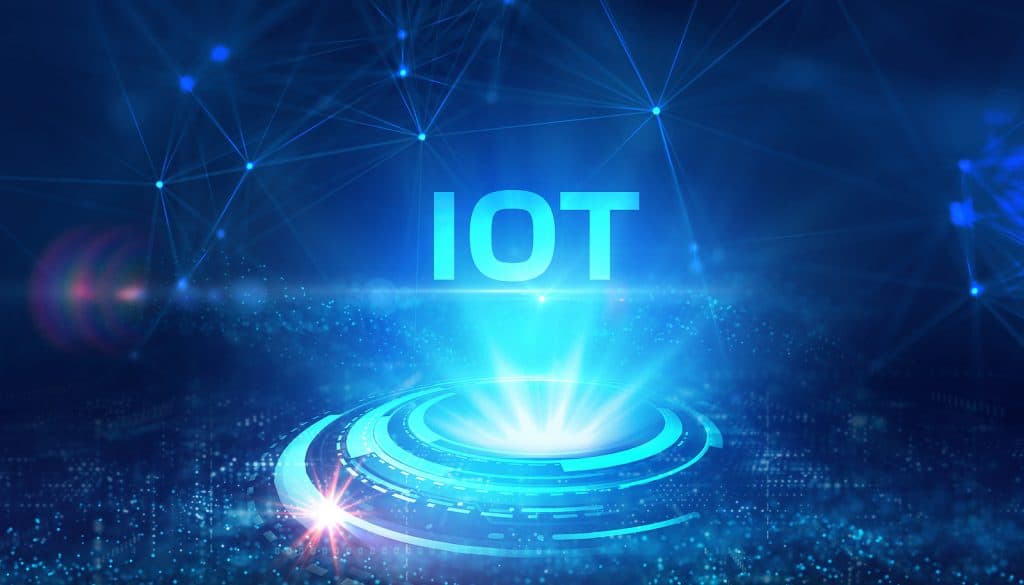The Internet of Things (IoT) is a term used to refer to the wide-scale connectivity of devices used in homes and businesses. In this connected world, numerous benefits can be gained, such as convenience and efficiency. However, there are also security concerns that need to be addressed when it comes to IoT. These include vulnerabilities related to the devices and how they interact with other systems within an organization or home. This article will provide an overview of how organizations can address these challenges by implementing cybersecurity strategies that protect their IoT systems from attack at both the device and network levels.”
The Internet of Things is a security problem.
The Internet of Things is a security problem. It’s not just that IoT devices are vulnerable to hacking and malicious software or even malware and phishing; they can be spoofed.
What does this mean for you? If you own an IoT device, there are many ways someone else could gain control over it: by tricking your phone into connecting with theirs; by monitoring the traffic between your computer and router; or even through social engineering techniques like phishing emails that ask for passwords or other personal information.
There is no such thing as complete security.
Security is a process, not a product. There is no such thing as complete security. Security is about building layers of defense and being mindful of the risks you take to achieve your goals.
According to R2-certified recycler Big Data Supply inc, it’s essential for companies looking to implement IoT solutions to understand this: if you want your devices connected and communicating with each other, there will always be some level of risk associated with that decision because there are no guarantees that every single component has been designed with security in mind or has undergone proper testing before it was released onto the market.
This means we need better education around proper use cases for internet-connected devices and a sounder understanding among consumers about how to protect themselves against cyberattacks targeting these products (for example, by updating software when new vulnerabilities are discovered).
IoT device manufacturers should be held responsible for their products.
In the case of IoT device manufacturers, it’s crucial to hold them responsible for their products. They should be liable for any damage caused by insecure products and held accountable for security issues. Additionally, manufacturers should be required to pay for any damages caused by insecure products. If a hacker hacks into your smart refrigerator and turns off all your food, who should be responsible? The manufacturer or retailer?
If an insecure product causes harm, then it makes sense that someone should pay up–and ideally not just financially; perhaps there could also be criminal penalties associated with selling unsafe hardware (like jail time).
Encouraging the correct behavior and practices is essential to securing the Internet of Things.
The first step to securing the Internet of Things is encouraging the right behavior and practices. This can be accomplished by educating users on how to secure their devices, encouraging them to change default passwords, patch their devices, use strong passwords, and enable two-factor authentication.
Encouraging these secure behaviors will help you build trust with your customers and ensure they continue using your products or services safely.
One of the most effective ways to encourage secure behavior is by educating your customers through various channels. These can include email campaigns, webinars, or even in-person workshops. You should also ensure that your product documentation provides information about securing devices and what steps to take if they experience a breach.
Cybersecurity standards should be developed at the national, regional, and international levels.
Standards need to be developed at all levels. National, regional, and international standards are needed for cybersecurity in IoT systems. These should be developed by experts who can review and update them regularly.
Standards must also be applied consistently across industries and jurisdictions so that they are effective at preventing attacks from happening in the first place.
Standards should be based on best practices and, ideally, include input from industry experts who can help ensure they are practical for use in the field. They should be regularly updated to reflect the latest threats and technologies. The standards process should also be transparent to allow stakeholders to monitor progress and provide feedback.
Cybersecurity education needs to be integrated into all educational programs.
While cybersecurity education is essential for everyone, it’s especially critical for those working in technology. This can include anyone from software developers to data scientists and engineers who have the opportunity to create new technologies that will impact millions of people around the world.
If we want to make sure these technologies are secure and safe from cyberattacks, we need more people with a strong understanding of cybersecurity principles–and this means integrating cybersecurity education into all educational programs, including those in computer science training programs.
IoT security is a serious issue that requires action on all levels.
The Internet of Things is an exciting technology that has the potential to make our lives better. However, with all of its benefits comes numerous security challenges.
The IoT is becoming increasingly complex as more devices become connected and interdependent, making it difficult for users to understand what information is being exchanged between their devices and other networks they connect to. This makes it easier for hackers and cybercriminals to exploit these vulnerabilities to steal data or infect computers with malware that can cause damage across a large area.
IoT security can be addressed by addressing the following areas:
- The security of the device itself, including its operating system and application software.
- The network is used to connect IoT devices to each other or to the internet.
- The security of data exchanged between devices, networks, and applications
In addition to addressing these areas, security solutions should also be easy to use and easy for users to understand. This means that the average person should feel comfortable using their IoT devices without having a background in computer science or cybersecurity.
The Internet of Things Security – Conclusion
The Internet of Things is a vast field with many exciting opportunities. However, it also poses significant challenges and brings with it new risks to our personal data and privacy. It’s imperative that we take these issues seriously before they become even more severe problems in our daily lives.
FAQ
A: Securing the Internet of Things” involves implementing measures to protect IoT devices, networks, and data from cyber threats. It’s crucial because IoT devices are susceptible to hacking, data breaches, and other cyberattacks, which can have far-reaching consequences for privacy, safety, and data integrity.
A: IoT devices often have limited computing power, making it challenging to implement robust security measures. Moreover, the number of connected devices, diverse communication protocols, and potential vulnerabilities in device firmware create a complex cybersecurity landscape.
A: Businesses and individuals can take proactive steps such as regular software updates, strong authentication mechanisms, encryption of data in transit and at rest, network segmentation, and continuous monitoring of devices to detect and respond to potential threats.
A: Yes, several industry standards and best practices have emerged, such as the OWASP IoT Top Ten, the IoT Cybersecurity Improvement Act, and guidelines from organizations like NIST and ISO. These frameworks guide securing IoT devices and networks.
A: Securing IoT devices involves unique challenges due to their resource limitations and diverse nature. Traditional cybersecurity often focuses on endpoints like computers and servers. At the same time, IoT security requires considering a wide range of devices with varying capabilities and vulnerabilities, making it more intricate and dynamic.

